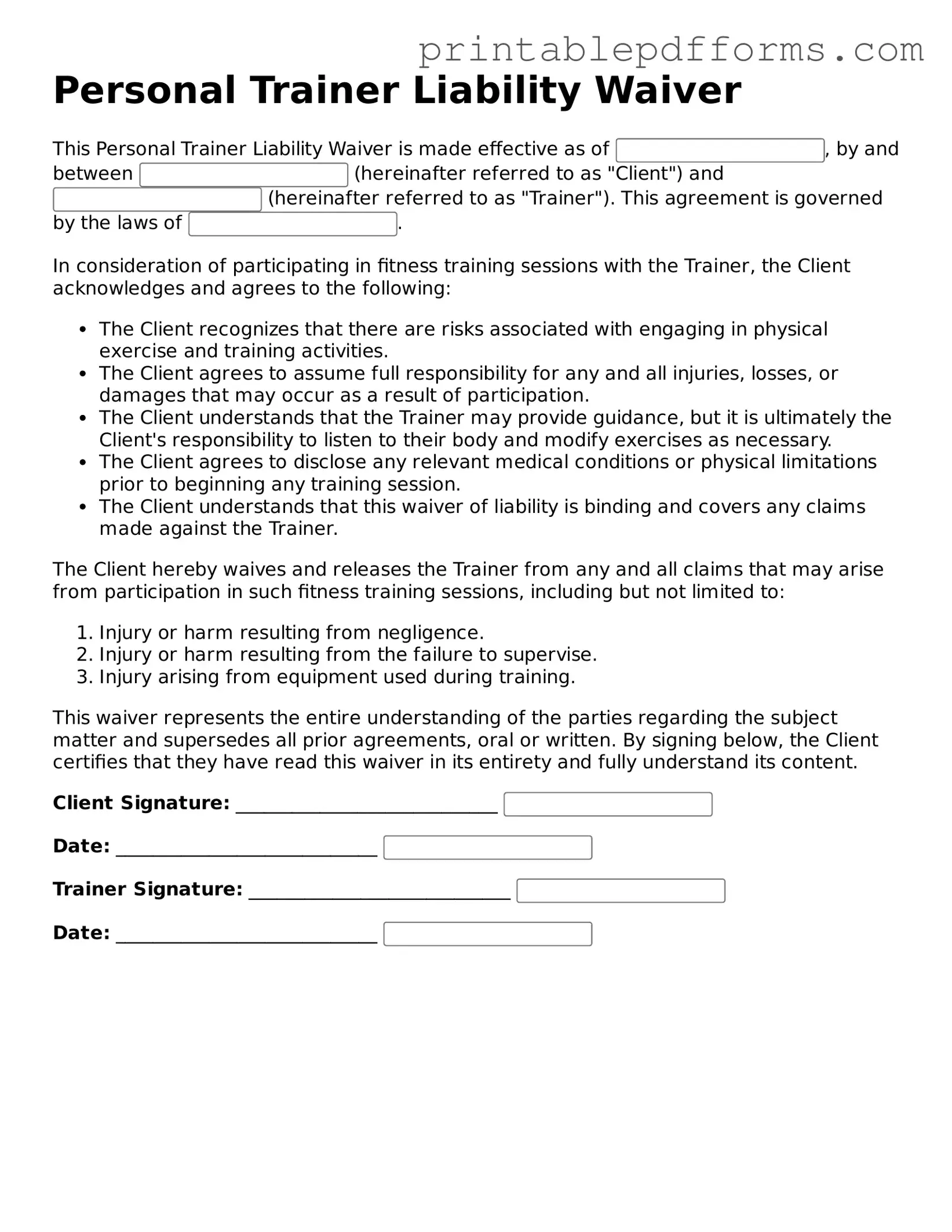Blank Personal Trainer Liability Waiver Form
A Personal Trainer Liability Waiver form is a legal document designed to protect personal trainers from potential lawsuits arising from injuries or accidents that may occur during training sessions. By signing this form, clients acknowledge the inherent risks associated with physical activity and agree to hold the trainer harmless for any unforeseen incidents. Understanding the importance of this waiver is crucial for both trainers and clients to ensure a safe and enjoyable fitness experience.
Ready to take the next step? Fill out the form by clicking the button below!
Create This Document Online
